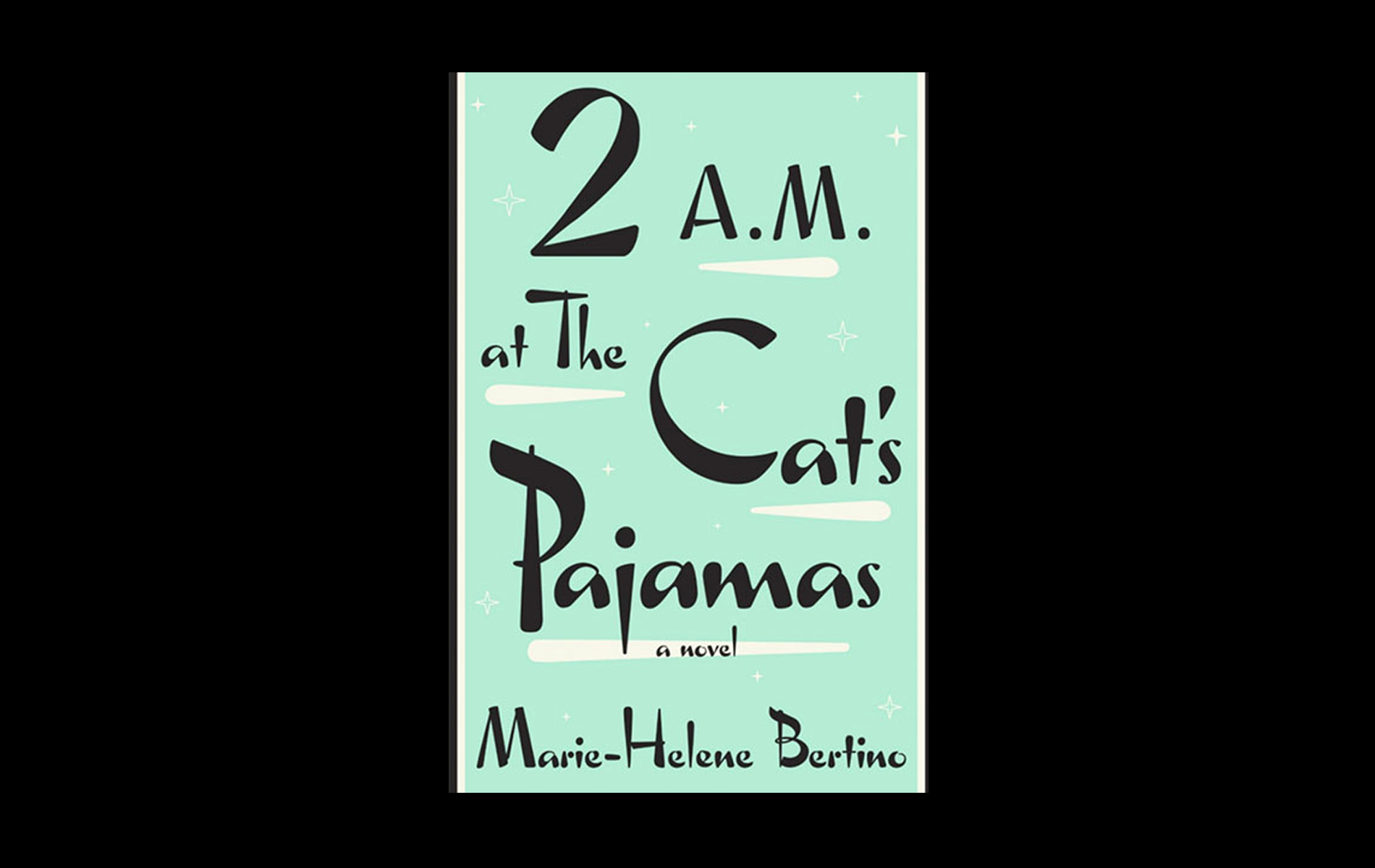An atmospheric novel that will take you into the minds of its characters and onto the streets of Philadelphia, all in the timespan of just a day.
reviewed by JoAnna Novak
Marie-Helene Bertino’s debut novel, 2 A.M. at The Cat’s Pajamas, is about hope and drive and heart, being good to your neighbors, burying old hatchets and believing in the coruscating promises of city lights. It’s about jazz and lice and prom and love.
Nine-year-old Madeline Altimari stars in this tale of French-braided lives that are snarled inside-out one eventful Christmas Eve Eve. Madeline lives in a roach-infested apartment in Philadelphia with her dad, the former proprietor of a cheese shop before his wife’s death. Though Mr. Altimari was once a loving husband and father, his grief keeps him in bed, where he’s surrounded by old jazz books (his wife was a chanteuse) and pain pills. Now, motherless Madeline is the ward of Philly’s Fishtown neighborhood, where she’s fed by Mrs. Santiago, cafe-owner and recent-widower; nuzzled and licked by irascible pup Pedro; coiffed by the gum-smacking Vince Sherry; and heartlessly expelled by Principal Randles. And in the great tradition of nurturing educators like Roald Dahl’s Miss Honey, Madeline is understood by her teacher, Sarina Greene. With Madeline, Sarina is not afraid to cross boundaries,in the interest of protecting Madeline.
This novel spans only 24 hours, but Bertino’s characters are so realized that their pasts emerge via flashbacks and memories. A world away from Madeline’s school, St. Anthony’s, is The Cat’s Pajamas, a fading star in the city’s history of jazz clubs. Owner Jack Francis Lorca’s day starts when he wakes up to a citation from a vaguely OCD plainclothes officer who wants to shut down The Cat’s Pajamas for “consistent refusal to stop serving alcohol at two A.M.” and “consistent refusal to abide by the city’s law of no smoking inside the premises.”
Legendary flames, musical pyrotechnics, boiling tea kettles: Bertino’s chapters progress like chain-smoked cigarettes; the next is lit off the last. The third-person, limited point of view whizzes so nimbly from child to dog, junkie to teacher, guitarist to principal, that several different consciences are inhabited in the space of a few pages.
Maybe if this novel had been written 15 years ago, when films like Magnolia and Crash seemed hellbent on proving the world to be a cold, cruel, interconnected place (falling frogs be damned), these characters would have run into one another—trading barbs and throwing punches and buying pears and scarfing sandwiches—without any sense of hope.
But the Philly of 2 A.M. at The Cat’s Pajamas pulses with heart and, yes, brotherly love. Bertino’s interconnectedness is about shared vitalities and spirits creating sodality out of the most dire situations, and she advances this thesis so nimbly—first one character knows something, “the way you know on a flight, even with your eyes closed, that a plane is banking,” then another character and another and another experiences the same sensation. Community, in Fishtown, exists almost on the cellular level.
2 A.M. at The Cat’s Pajamas is a page-turner, but a deceptive one; it’s a novel that makes me question the relationship between value and speed. Does a slow-going book contain more literary heft? Does fast mean easy? No.
Bertino’s writing snaps and crackles and pops; sound is everywhere (young Madeline is a budding chanteuse who, when we first meet her, is practicing her shimmy). In these pages, vocal “tremolos” and “glissandos” hold court with “karangs” and “thwips.” Curtis Hall musicians “arpeggiate.” But there is also the lyricism of Bertino’s sentences; sometimes, they’re almost prose poems:
“Girls, thinks Ben. Flutelike, gauze-filled, late-afternoon sunshine. Rainbow bracelets on the carpet. They use their tongues to wet their lips. Girls. They pretend to like each other. Dotting their i’s with hearts, arching their backs, manipulating their confusing hair with flat irons, curling irons, glisten, extra, ultra hold, hold my purse, hold me close, no duh, bubble gum, gym socks, tube socks, tubes of gloss, tube tops, purrs, pert collars, full hair, full tits, just the tip! Their sound, the upper notes of a xylophone. Their legs, downed in fur. Girls.”
As I settled into the novel, I felt like I’d wandered into a Disney movie where even teacups have hearts. The verbs are relentlessly active—“eggs cuss and snap on the stove,” a caramel apple is “karate-chopped” off its stick—and the imagery is pulsey, peppery, perky. The aforementioned citation that The Cat’s Pajamas owner, Lorca, receives changes color—from “emergency cones” to “prison jumpsuits,” a tiny nod toward the increasing gravity of the situation.
This language is alive and staggeringly original, but my heart was won with the plainer observations, so sneakily simple-sounding, like this one about Sarina Greene, Madeline’s teacher: “She counteracts the feeling of being a failure by plunging into every task like a happy doe in brush.”
Or this one, “Madeline has no friends because she’s a jerk.” Followed by this one, a few beats later: “Even jerks have mothers who die.”
JoAnna Novak is the Pushcart-Prize-




